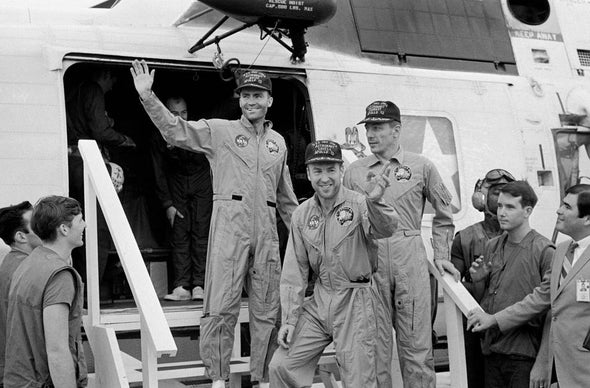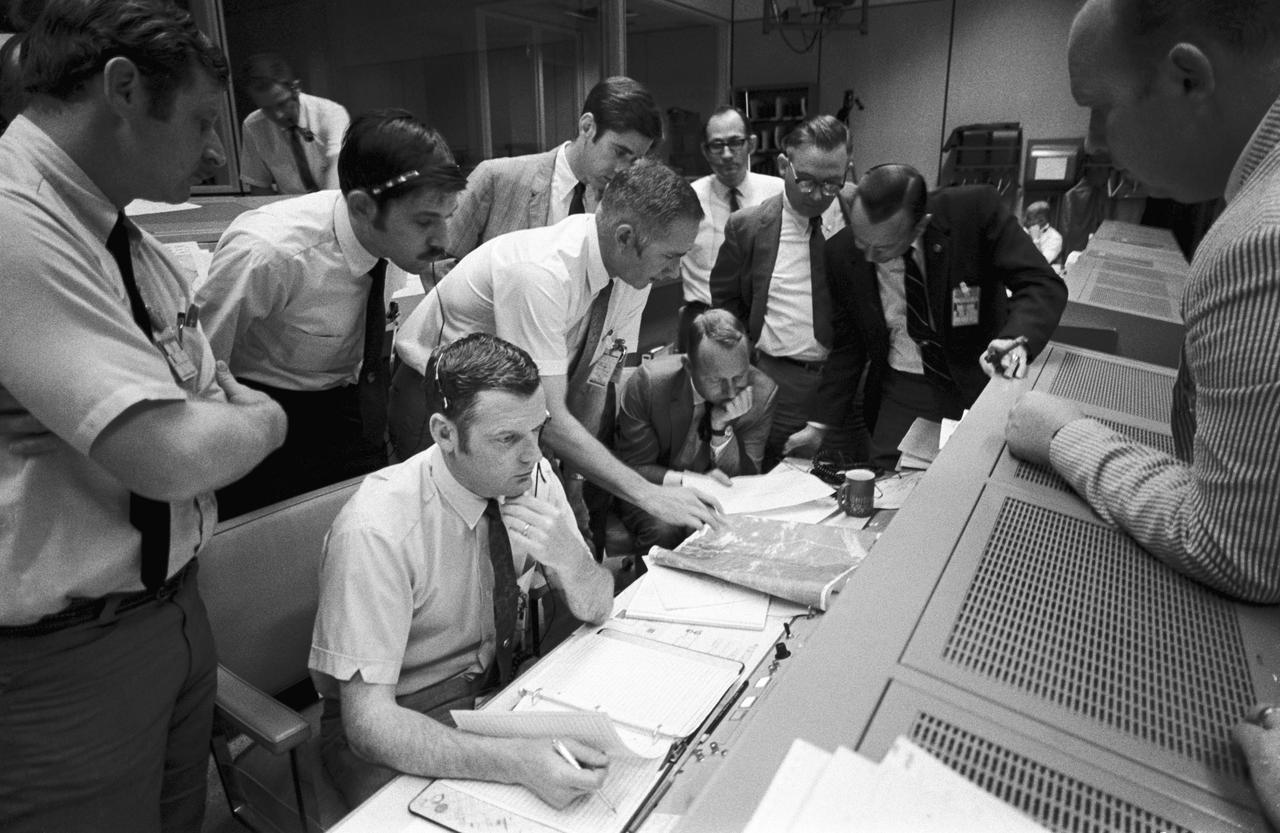 Scientific American
Scientific American
Its commander Jim Lovell and pilot Fred Haise reflect on their fateful, flawed voyage to the moon

Had everything gone to plan, NASA’s third mission to land astronauts on the moon would have deployed a pallet of science instruments and brought back samples from humanity’s first visit to the lunar uplands. Instead, 50 years ago this month, Apollo 13 “had a problem.”
An oxygen tank that had been unknowingly damaged before it left the ground exploded en route to the moon, crippling the spacecraft with astronauts Jim Lovell, Fred Haise and Jack Swigert onboard. In an instant, the April 1970 mission’s priority switched from extending knowledge about Earth’s natural satellite to safely returning the crew home.
“We said, ‘Oh, my God, the moon landing is off,’” recalls Lovell, Apollo 13’s commander. “We still had one good fuel cell, and it was providing enough electrical power to get us back to Earth. But the oxygen needed for the fuel cell was being spewed out the backend of our spacecraft.”
Quickly assessing the situation and following the guidance of a team of engineers on the ground, the crew went to work on shutting down the command module and powering up the lunar lander to serve as a lifeboat.

“Before you go on one of these missions, you assume, necessarily, you’re not going to get back,” says Haise, Apollo 13’s lunar module pilot. “I had no idea about the percentage—what odds there were. It was a matter of working through it with a number of the challenges and [hoping] that someone on the ground, working at mission control, would find the answers.”
Using something that was still operating on the spacecraft—namely, the rocket engine that would have landed Lovell and Haise on the moon—Apollo 13 was put on a “free-return” trajectory. Looping around the far side, the moon’s gravity would provide the acceleration needed to get the astronauts back to Earth.
Lovell had been to the moon before—he was among the first three people to enter its orbit on the Apollo 8 mission two years earlier—but this journey was the first time Haise and Swigert saw the cratered surface up close. As command module pilot, Swigert had trained to photograph the natural satellite from high above, including using a new large-format topographic camera that had not been flown before. But with the crew members’ survival weighing heavily on everyone’s mind, the mission’s science objectives were not a priority.
“The flight plan was in the wastebasket. Jack and I both pulled out our cameras and shot a lot of pictures. We shot them mostly out of interest as a tourist,” Haise says. “Looking down at the moon, we could view Fra Mauro, our site where we planned to land.”

Unlike the sites chosen for the Apollo 11 and Apollo 12 landings, which had both been on the flat basaltic plains of the moon’s maria, or “seas,” the Fra Mauro highlands were characterized by low ridges and large hills, offering brand-new varieties of lunar terrain to explore. The area was of particular interest to geologists, because it was anticipated that much of the material on the surface had been excavated and ejected from the nearby Cone Crater.
Haise’s first view of Fra Mauro should have been a moment of excitement: under normal circumstances, it would have been a glimpse of things to come. Instead the view was immediately a reminder of what he would not get to achieve. “It wasn’t an overwhelming kind of emotion at that point. It was just a continuation of the feeling of disappointment that we were not going to be able to do as we trained and set out to do,” he says.
Had there not been an explosion, Lovell and Haise would have touched down on the lunar surface and made two moon walks, including a trek to the rim of Cone Crater. The two astronauts had undergone extensive training not just to pick up moon rocks and traverse their landing site but also to deploy instruments in order to “gather and relay long-term scientific data to Earth for at least year on the Moon’s physical and environmental properties,” as NASA’s preflight press kit read.
Some of the hardware was of the same design that had flown on the two prior moon landings. For example, both Apollo 11 and Apollo 12 had left behind seismometers to measure meteoroid impacts and “moonquakes.” (Apollo 12’s seismometer, like Apollo 13’s, was powered by a nuclear radioisotope thermoelectric generator, or RTG, that led to a disposal concern at the end of the latter mission.) Others science tools were planned to be used for the first time.
“The unique one that we had on our flight, which was not flown again until Apollo 15, was the electric drill,” Haise says, referring to part of a heat-flow experiment that called for boring a few meters into the moon’s surface to collect core samples. (As it turned out, Haise might have run into the same difficulty that the Apollo 15 crew later did, given the tendency for the lunar regolith, or soil, to clog up the drill.)

The other lunar science packages on Apollo 13 included a charged-particle experiment that would have measured the effects of the solar wind in the moon’s environment; a cold-cathode-gauge experiment to quantity the density and temperature variations in its thin atmosphere and a dust detector. “I think if we had landed, and if we never had the problem in the first place, I think the science work we had trained for would have been achieved,” Lovell says.
In the end, the crew did get home safely (Swigert later died of cancer in 1982). Without the opportunity to survey the Fra Mauro region and deploy the lunar-surface experiments, NASA’s program director recommended the Apollo 13 mission be considered “unsuccessful.” But not all of its science was lost.
As the astronauts were returning home, the segment of their rocket that boosted them away from Earth was purposely directed to collide with the moon. The resulting impact, as measured by a seismometer deployed during Apollo 12, walloped the surface with an energy equivalent of more than 10 metric tons of TNT. The data that were collected provided new insight into the composition of the natural satellite, which, in turn, informed future moon-landing missions and their experiment packages.
After having set aside all of their training and science objectives, the news from mission control that the booster’s impact had been successfully recorded inspired Lovell to respond. “Well, at least something worked on this flight,” he radioed back to Earth.



